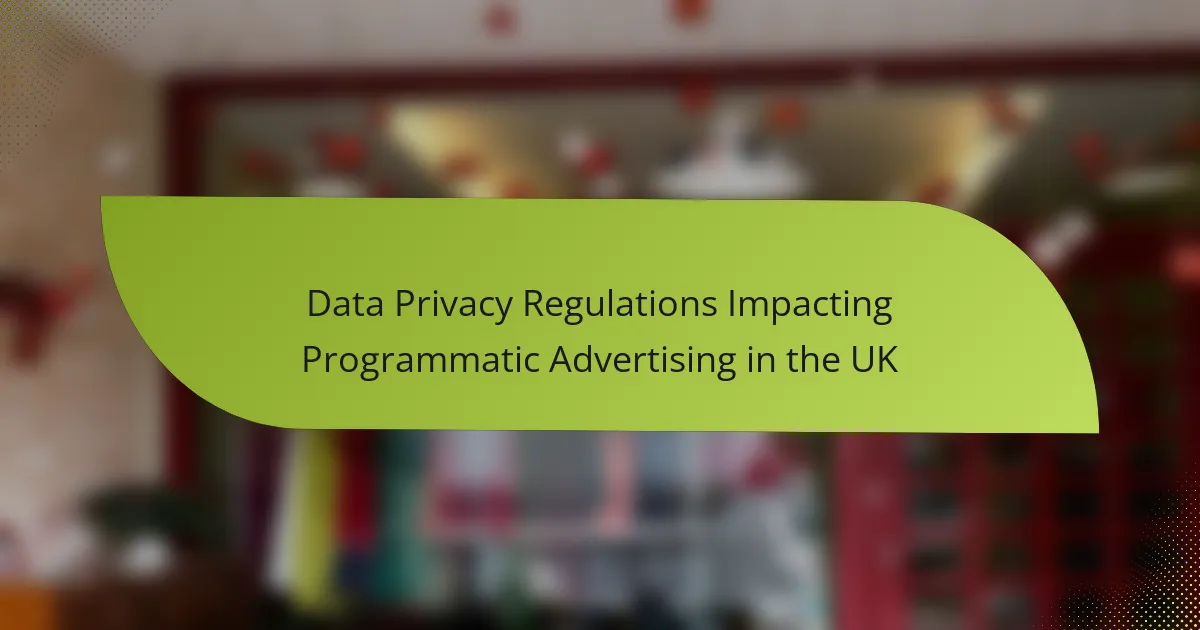Ad fraud poses a significant threat to UK programmatic advertisers, undermining campaign effectiveness and wasting valuable budgets. To combat this issue, advertisers can leverage advanced technologies and strategic practices, such as fraud detection software, whitelists and blacklists, and machine learning algorithms. By understanding the various types of ad fraud and selecting appropriate prevention tools, advertisers can effectively safeguard their investments and enhance their advertising outcomes.

What are the best ad fraud prevention techniques for UK programmatic advertisers?
UK programmatic advertisers can effectively combat ad fraud by implementing a combination of advanced technologies and strategic practices. Key techniques include utilising fraud detection software, maintaining whitelists and blacklists, employing viewability metrics, conducting regular audits, and adopting machine learning algorithms.
Implementing fraud detection software
Fraud detection software is essential for identifying and mitigating ad fraud in real-time. These tools analyse traffic patterns, user behaviour, and other metrics to flag suspicious activity. Popular options include platforms like Integral Ad Science and DoubleVerify, which offer comprehensive solutions tailored for the UK market.
When selecting fraud detection software, consider factors such as integration capabilities, reporting features, and the ability to adapt to emerging threats. Regular updates and support from the provider are also critical for maintaining effectiveness against evolving fraud tactics.
Utilising whitelists and blacklists
Whitelists and blacklists are powerful tools for controlling where ads are displayed. Whitelists contain approved sites that are deemed safe for advertising, while blacklists include sites known for fraudulent activity. By using these lists, advertisers can significantly reduce the risk of ad fraud.
It’s important to regularly update these lists based on performance data and industry insights. Collaborating with trusted partners and industry organisations can help ensure that your lists remain effective and relevant in the fast-changing digital landscape.
Employing viewability metrics
Viewability metrics measure whether ads are actually seen by users, which is crucial for determining the effectiveness of ad placements. Advertisers should aim for viewability rates of at least 50% to ensure that their ads are not only served but also visible to potential customers.
Tools like Moat and Google’s Active View can help track these metrics. Regularly analysing viewability data allows advertisers to optimise their campaigns and make informed decisions about where to allocate their budgets for maximum impact.
Conducting regular audits
Regular audits of ad campaigns are vital for identifying discrepancies and potential fraud. These audits should review traffic sources, conversion rates, and overall campaign performance to uncover any anomalies. Conducting audits at least quarterly can help maintain transparency and accountability.
Involve third-party verification services to add an extra layer of scrutiny. This can help ensure that your findings are objective and that any fraudulent activity is promptly addressed.
Adopting machine learning algorithms
Machine learning algorithms can enhance ad fraud prevention by analysing vast amounts of data to detect patterns indicative of fraud. These algorithms can adapt over time, improving their accuracy in identifying suspicious behaviour and reducing false positives.
Consider partnering with technology providers that specialise in machine learning for ad fraud detection. This approach can provide a proactive defence against evolving fraud tactics, ensuring that your advertising efforts remain effective and efficient.

How can UK advertisers choose the right ad fraud prevention tools?
UK advertisers can select effective ad fraud prevention tools by assessing their specific needs, evaluating the tools’ performance, and ensuring they integrate well with existing systems. Prioritising these factors helps in mitigating risks associated with ad fraud while maximising advertising budgets.
Evaluating tool effectiveness
To evaluate the effectiveness of ad fraud prevention tools, UK advertisers should consider metrics such as detection rates, false positives, and the speed of response. Tools should ideally provide real-time analytics and reporting to allow for quick adjustments in campaigns.
Look for independent reviews and case studies that demonstrate how well a tool has performed in similar contexts. Engaging with peers in the industry can also provide insights into which tools have proven successful in combating ad fraud.
Considering integration capabilities
Integration capabilities are crucial for ensuring that ad fraud prevention tools work seamlessly with existing advertising platforms. Tools that offer APIs or plugins for popular programmatic platforms can save time and reduce operational complexities.
Before making a decision, assess how easily a tool can be incorporated into your current tech stack. Compatibility with data management platforms (DMPs) and demand-side platforms (DSPs) can enhance overall campaign efficiency.
Assessing cost versus ROI
When assessing the cost versus return on investment (ROI) of ad fraud prevention tools, consider both the direct costs and the potential savings from reduced fraud. Tools may have upfront costs, ongoing subscription fees, or performance-based pricing models.
Calculate potential ROI by estimating the financial impact of fraud on your advertising budget. A tool that prevents even a small percentage of fraud can justify its cost, especially in high-stakes campaigns. Aim for tools that offer transparent pricing and clear metrics for measuring success.

What are the common types of ad fraud affecting UK programmatic advertising?
UK programmatic advertising faces several types of ad fraud that can undermine campaign effectiveness and waste budgets. Understanding these fraud types is crucial for advertisers to implement effective prevention strategies.
Click fraud
Click fraud occurs when individuals or automated systems generate false clicks on ads, inflating engagement metrics and draining advertising budgets. This can happen through bots or by competitors deliberately clicking on ads to exhaust the budget.
To mitigate click fraud, advertisers should monitor click patterns and set up IP filtering to block suspicious sources. Employing click fraud detection tools can also help identify and prevent fraudulent activity.
Impression fraud
Impression fraud involves the generation of fake ad impressions that do not result in real views, often through bots or ad stacking techniques. This type of fraud can significantly distort campaign performance metrics, leading to misguided marketing decisions.
Advertisers can combat impression fraud by using verification services that track viewability and ensure that ads are served to real users. Regular audits of ad placements can also help identify and eliminate fraudulent impressions.
Ad stacking
Ad stacking is a technique where multiple ads are layered on top of each other in a single ad placement, leading to only the top ad being visible. This practice can mislead advertisers into believing their ads are being viewed when, in reality, they are not.
To avoid ad stacking, advertisers should work with reputable publishers and demand transparency in ad placements. Utilising ad verification tools can help ensure that ads are served correctly and are viewable by actual users.
Domain spoofing
Domain spoofing occurs when fraudsters impersonate legitimate websites to sell ad space, tricking advertisers into believing they are purchasing placements on reputable domains. This can lead to wasted ad spend and ineffective campaigns.
To prevent domain spoofing, advertisers should verify the authenticity of the domains where their ads are placed. Implementing a whitelist of trusted domains and using third-party verification services can help safeguard against this type of fraud.

What role do industry standards play in ad fraud prevention?
Industry standards are crucial in ad fraud prevention as they establish best practices and benchmarks for advertisers. By adhering to these standards, UK programmatic advertisers can enhance transparency, improve accountability, and reduce the risk of fraudulent activities.
Adherence to IAB guidelines
Adhering to the Interactive Advertising Bureau (IAB) guidelines helps UK advertisers implement effective measures against ad fraud. These guidelines outline essential practices for ensuring ad quality, including verification processes and data transparency.
For instance, using IAB-approved verification tools can help detect invalid traffic and ensure that ads are served to real users. Advertisers should regularly review their compliance with these guidelines to maintain the integrity of their campaigns.
Collaboration with industry coalitions
Collaboration with industry coalitions, such as the Coalition for Better Ads, enhances ad fraud prevention efforts. These coalitions bring together stakeholders to share insights, develop new technologies, and create unified standards that address emerging threats.
Participating in these coalitions allows advertisers to stay informed about the latest trends and tactics used by fraudsters. Additionally, it fosters a community approach to combating fraud, where collective knowledge leads to more robust defenses against ad fraud.

How can UK advertisers stay updated on ad fraud trends?
UK advertisers can stay informed about ad fraud trends by regularly following industry reports, joining relevant forums, and participating in webinars. Engaging with trusted sources and networks helps in understanding the evolving landscape of ad fraud.
Follow industry reports and publications
Regularly reading industry reports from organisations like the Interactive Advertising Bureau (IAB) UK and the Advertising Standards Authority (ASA) provides valuable insights into current ad fraud trends. These publications often highlight emerging threats and best practices for prevention.
Consider subscribing to newsletters from reputable digital marketing agencies or fraud detection platforms. This ensures you receive timely updates and analyses directly related to ad fraud developments.
Engage with professional networks
Joining professional networks and forums such as the Programmatic Advertising Association (PAA) allows UK advertisers to connect with peers and share experiences regarding ad fraud. These platforms often host discussions on recent fraud incidents and effective countermeasures.
Participating in local meetups or online webinars can also enhance your understanding of ad fraud. These events often feature expert speakers who discuss the latest trends and technologies in fraud prevention.
Utilise fraud detection tools
Implementing advanced fraud detection tools is essential for UK advertisers to monitor and analyse their ad campaigns effectively. Tools like Moat, Integral Ad Science, and DoubleVerify help identify suspicious activity and provide actionable insights.
When selecting a tool, consider factors such as ease of integration, reporting capabilities, and cost. Many platforms offer trial periods, allowing you to assess their effectiveness before committing to a subscription.



